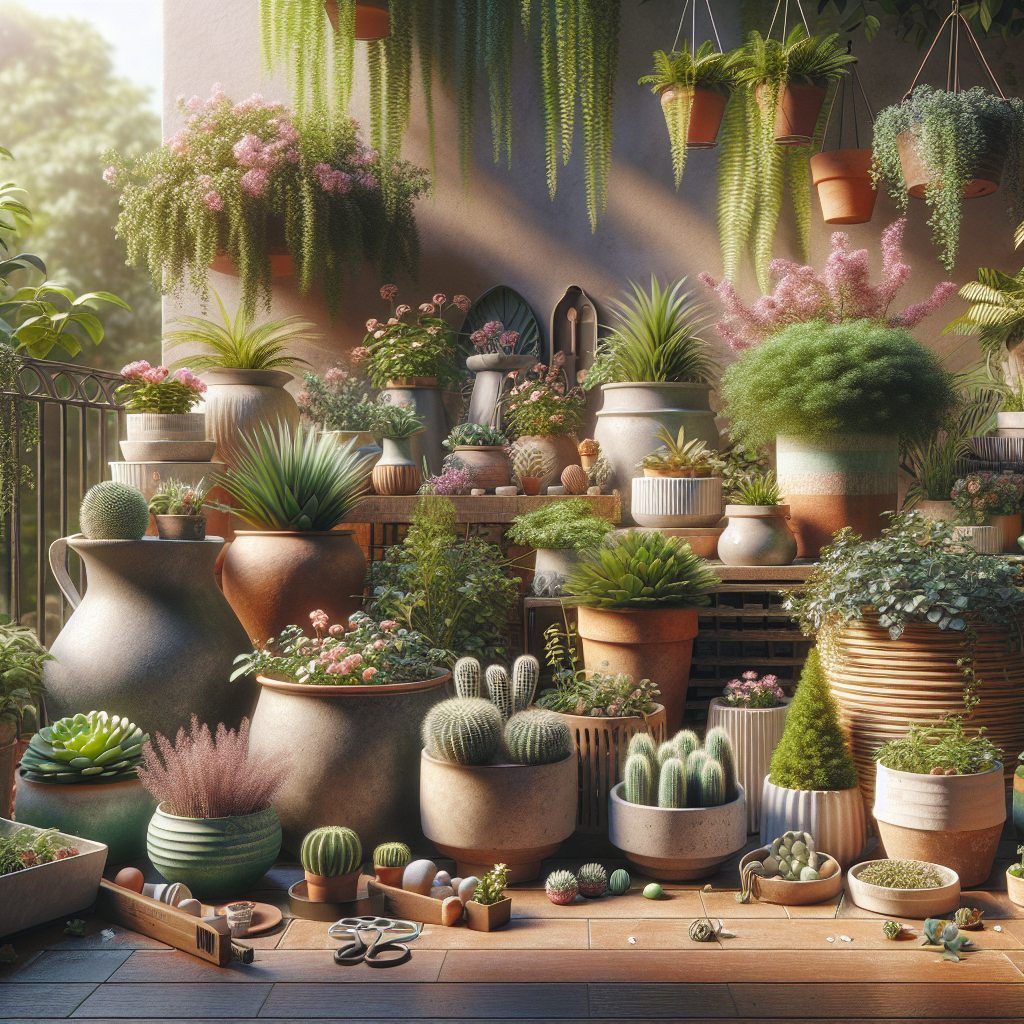# Transform Your Space with the Art of Container Gardening
Container gardening is a versatile and dynamic way to cultivate plants in an array of different environments. Whether you have a sprawling backyard, a cozy balcony, or simply crave a touch of greenery on your windowsill, container gardening offers an accessible and customizable solution. This practice taps into the ancient connection humans have shared with plants, allowing even novice gardeners to nurture their green thumb. Let’s explore how you can transform your space with the art of container gardening.
## The Universal Appeal of Container Gardening
One of the greatest advantages of container gardening is its universal appeal and flexibility. Anyone can engage in this activity regardless of their living situation:
1. **Urban Dwellers:** City residents often lack access to traditional garden spaces, but containers can turn balconies, rooftops, and even fire escapes into lush gardens.
2. **Suburban Homes:** For suburban gardeners with ample yard space, container gardening allows for creative planting arrangements that can highlight specific areas such as patios or entryways.
3. **Rural Residencies:** Even those with extensive garden plots may find container gardening advantageous for cultivating herbs, controlling invasive species, or managing soil conditions unique to particular plants.
## Benefits Beyond Beauty
Beyond enhancing aesthetic appeal, container gardening brings numerous practical benefits:
– **Accessibility:** With containers raised off the ground, they are easier to maintain for those with mobility issues.
– **Pest Management:** Containers can be moved indoors or relocated to deter pests.
– **Microclimate Control:** Specific plants may thrive better in customized conditions which containers naturally support.
– **Experimentation:** Novices can test their skills on a smaller scale without committing extensive resources.
## Selecting the Right Containers
The foundation of successful container gardening lies in selecting suitable containers based on material, size, and drainage capacities.
### Materials
Containers come in various materials including:
– **Plastic:** Lightweight and affordable but might not offer ideal insulation against extreme temperatures.
– **Terracotta/Clay:** Offers breathability for plant roots but is prone to cracking under cold conditions.
– **Ceramic/Glazed Pots:** Attractive but often heavy; ensure they have drainage holes.
– **Wooden Planters:** Provide good insulation; however untreated wood may decay over time.
– **Fabric Pots/Grow Bags:** Breathable and easy storage solutions when not in use.
### Size
Choosing appropriate size depends upon plant type:
– Small pots work best for herbs like basil or decorative succulents.
– Medium-sized vessels suit compact vegetable varieties like peppers.
– Larger planters accommodate root-heavy crops like tomatoes or dwarf fruit trees.
### Drainage
Proper drainage is crucial since waterlogged soil suffocates roots leading potentially fatal consequences:
– Ensure pots possess adequate drain holes (at least one at the bottom).
– Consider placing gravel/pebbles layer at base before adding soil mix improving water flow further preventing saturation risk near roots system itself while promoting healthy growth process overall.
## Soil Mix & Fertilization
Unlike regular garden beds relying heavily upon native soils natural properties providing essential nutrients required growth stages different plant types involved various scenarios accordingly being predetermined beforehand obviously comprising significant factor determining overall success rates achieved long-term basis typically speaking…













